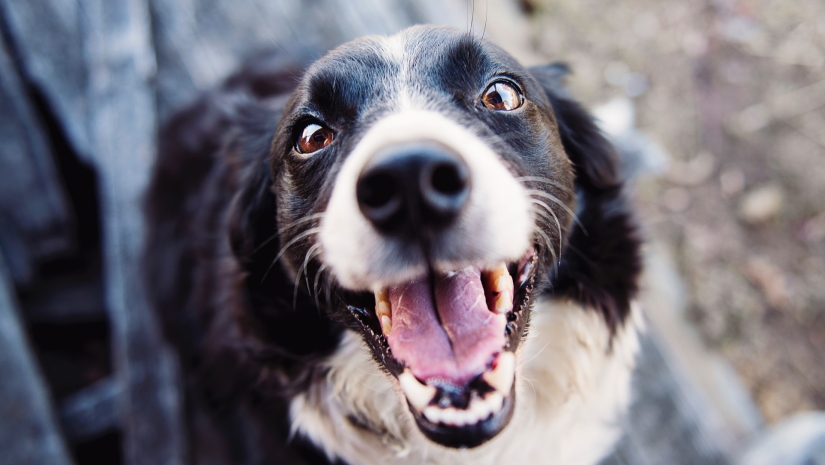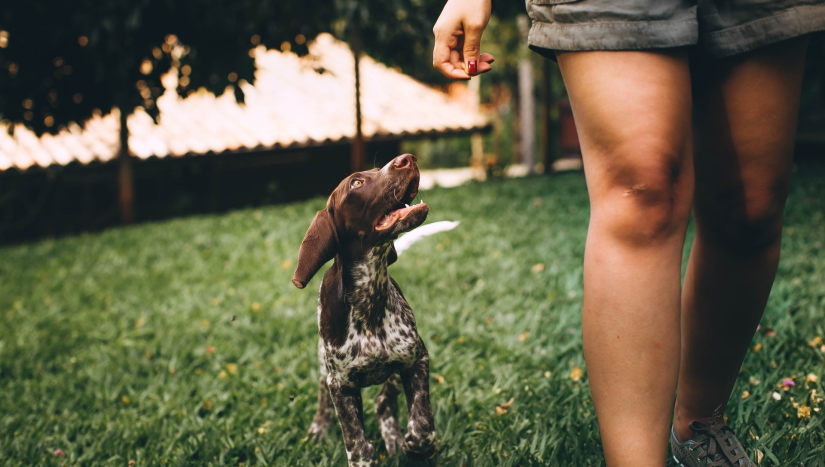Four-legged friends make the best friends. Every dog parent knows that owning a furry friend leads to the ultimate beautiful friendship. Whether you are cuddling on the couch, going on long walks on the beach, or playing a lively game of fetch, owning a dog can do wonders for your happiness and wellbeing.
Despite the numerous mental and physical health benefits, owning a dog can cost thousands of dollars a year. From pet food to routine checkups, along with the occasional splurges on shiny new toys, the costs can add up quickly. While most people predict that a dog will only cost them $26-$75 a month, on average, it practically doubles that, at $153.
However, it is possible to save money without compromising the health and happiness of your canine. Here are some ways to stay frugal while still meeting your pooch’s needs. Ready to become a savvy dog parent?
Healthcare Hacks
Some of the priciest expenses for a dog parent are the veterinary bills, regardless of how healthy your pet is. Below are several ways to keep the health costs of your pet as low as possible.
-
1. Buy Your Pets Medicine Online
Doggy medications can be almost expensive as human ones. Therefore it’s essential to shop around if you are trying to cut costs. While you can purchase many medications directly from your clinic, even vets will confess that buying online can save money. In urgent cases, splurge on the local stuff! But for routine medications that your dog takes daily, including heartworm pills or flea and tick prevention, search around for affordable subscriptions online.
However, you’ll want to exercise caution when doing so. Stick to mainstream sites, and avoid anything suspicious. If a resource looks questionable, keep scrolling. If you have any questions or concerns regarding the reliability of your retailer, consult your vet! They’ll be happy to help you and your pooch.
-
2. Do Your Dental Cleanings at Home
Just like humans, dogs need to take care of their teeth. The average cost of a doggy dental cleaning is typically $200-$300, but if your canine requires oral surgery, costs could spike up to a few thousand dollars.
Luckily, there are preventative ways to keep your puppy’s mouth squeaky clean. One of the best methods is (surprise surprise) brushing your dog’s teeth. Dog toothbrushes and pet-safe toothpaste is extremely inexpensive and a good investment. Start brushing your dog’s teeth while they are still young, so they gradually get used to the harmless activity. It’s also encouraged to perform this task regularly to prevent cavities and plaque build-up.
-
3. Keep Your Pet Healthy and Don’t Skip Preventative Care
Just like regular teeth brushing, you don’t want to skip out on preventative puppy care. You may think you are cutting costs by staying away from the vet, but it’s better to pay less now than astronomical veterinary bills down the line. Taking action sooner rather than later is crucial, including ensuring that your dog gets its necessary vaccinations and regular blood work. By scheduling routine check-ups, your vet may be able to catch a health issue early on, which will keep treatment costs for your pup relatively low.
The good news is, preventative costs and routine check-ups are covered by many pet insurance policies if you are willing to make the investment. Try to take your dog to the vet at least once a year and more frequently if you have a new puppy or an older canine.
-
4. Search for Affordable Vets in Your Area
Even though routine check-ups are more affordable than impromptu surgeries, they don’t come cheap. It’s common to walk out of a routine check-up with your wallet $200-$300 lighter. Rather than automatically opting for the closest vet in your neighborhood, do some research and compare clinic prices. Is there a vet offering an exclusive discount? Does your clinic accept your pet insurance? You might have to spend a little more time in the car getting there, but your wallet will thank you later.
Buy Food on a Budget
A dog gotta eat! Unsurprisingly, the biggest money pit when it comes to your dog is feeding its hungry stomach. Here are some ways to cut back on dog food.
-
5. Buy in Bulk
Big bags of kibble are your new best friend. For the same reason we all love Costco, when you buy dog food in bulk, you are saving money on a per item basis. Although dog food will always be a notable expense, you can save up to 25% by opting for the bigger bags. If you lack storage space or are uncomfortable purchasing lots of food at once, always go for the one large bag over several smaller ones. It might be painful to carry, but you’ll be doing yourself (and your wallet) a solid. If you buy your dog food online, use online shopping extensions like Capital One Shopping to save even more money on food.
Just remember to store your food strategically. It might not look like it, but dog food is perishable and will only stay good six weeks after it’s been opened. Keep an eye on the expiration date, and enclose your kibble stored in an airtight container.
-
6. Don’t Overfeed Your Dog
Every piece of kibble counts. Because you are already spending ample amounts of money on dog food, it’s important to feed your pooch just the right amount and not overdo it. Dogs love to eat, especially larger canines. Unlike most cats, they don’t have much willpower and will continue to chow down until their bowl is licked clean. Therefore, it’s up to you to exercise portion control. Consult your veterinarian and ask what the right amount of food is for your pup, based on their size, breed, and age. If you are in-between pet visits, there are also basic online calorie calculators for you to use to your advantage. Take note – every dog is different! While information from your vet and calorie counters may be a good place to start, take this information with a grain of salt and adjust accordingly. Your dog is a living and growing animal, and the amount of food that it needs will change over time.
Not only will overfeeding your dog affect your wallet, it will also affect your pup’s physical health. Remember those preventable diseases discussed earlier on? Overweight pets are more prone to arthritis, heart disease, ligament tears, and diabetes, all of which are preventable with the right diet and lifestyle. Keep an eye on your pet’s weight by providing the right amount of food and keeping the snacks and treats to a minimum.
-
7. Make DIY Pet Treats
If you are an adventurous home cook with a little extra time on your hands, try making your own pet treats! Although your dog doesn’t need treats, they can be extremely beneficial for training dogs, and a great doggy incentive when you need your pup to behave.
Check out free recipes online to experiment with – just make sure that you are using safe ingredients. Homemade snacks made from a single ingredient are often the safest and healthiest treats for canines. Another advantage to homemade doggy snacks is you can personalize them to suit your pet. You know your dog better than anyone else! If there is a food that your pet is averse to, you’ll know to avoid it.
-
8. Skip the Costly Canned Food
It’s very likely that your dog prefers canned food over kibble. Canned food is packed with protein, it goes down the gullet more easily, and often it tastes better! However, canned food is almost always more expensive than kibble. And if you have a larger canine, it would cost a fortune for it to subsist on a canned food only diet. Both canned food and kibble both provide adequate amounts of nutrition. Therefore, you will not be sacrificing your dog’s health by opting for the dry stuff.
If your dog is a picky eater, try mixing in some water to help soften the kibble. As a last resort, placed a layer of canned food on top of your kibble to make it more appetizing for your pooch. Check out your local retailers for good deals on canned food. For military veterans, an increasing number of companies have been offering deals and discounts for service members and their families.
Reign in the Lifestyle Expenses
While veterinary bills and food are regular expenses in your dog’s life, sometimes it’s the less routine expenses that sneakily affect your pet budget. Read on to discover some ways to cut costs on your pup’s lifestyle.
-
9. Save on Rent and Flights
While this tip may not apply to everyone, dog parents with emotional support animals (ESA) or psychiatric service animals, tune in! When renting an apartment, pet deposits and fees most commonly range from a flat fee of $200 to $500, or a monthly rate of $25 to $100. This adds up over time! However, if you have an emotional support dog, this could be an entirely different story. Laws have been created to support ESAs, and these special animals must be allowed even in buildings that prohibit pets. Even though your apartment building may impose fees for regular pets, they might not do so for ESAs if an individual is able to provide a legitimate ESA letter.
A similar protocol applies to psychiatric service dogs on airplanes. Like ESAs, psychiatric service animals provide assistance and support, assuaging symptoms involved in an individuals’ physical or mental disability. Regardless of size, weight, or breed, a psychiatric service animal is allowed to be your travel companion on any airline, free of charge.
-
10. Train Your Dog
For the sake of your sanity, all pups need some form of basic training. Simple commands like sit, dropping an object, and coming when called, are essential for your dog’s safety. If your dog runs off down the road or bites into a dangerous object, you will need to communicate with them in some fashion. That being said, you do not need a pricey personal trainer to teach your dog new tricks. There are so many free and inexpensive resources out there for you to learn from and take advantage of, such as YouTube tutorials, how-to videos, and dog training websites. If you want to go old school, check out some books or dog training manuals from your local library.
A lot of dogs are occasionally mischievous and misbehaved. Whether it’s excessive barking, or stealing your shoes, dogs have a sassy side to them. But rest easy, that’s normal dog behavior. However, there’s a big difference between a naughty canine and one showing aggressive behavior, such as biting. If your dog has severe behavioral issues, that’s when it’s worth the investment to dish out the big bucks and hire a professional. Safety first!
-
11. Have Bath Time at Home
Bathing your dog might not be the way you want to spend your lazy Sunday afternoon, especially if you don’t have a water-loving dog. While it might be tempting to hand over this role to a professional, think twice. A bottle of dog shampoo or flea shampoo only costs a few dollars. Meanwhile, taking your dog to the groomer generally costs between $30 and $90 dollars, depending on the size and thickness of your canine’s coat. When you take your dog to the groomer, you can expect a basic grooming session to not only include a bath, but a blow-dry, hair trim, ear cleaning, and more. Ask yourself, do you really need all that? Maybe! But most of the time, unless your dog has a fancy coat, more often than not a basic bath is enough for your four-legged friend.
-
12. Avoid the Kennel
Although it’s certainly possible to bring your pets on vacation, you might be looking for some R&R and time away from your energetic animals. While housing your doggy at a kennel might be the easiest, it certainly isn’t the cheapest. First, check with friends and family members to see if anyone is available to take care of your pup. This will probably be the most affordable option, and a simple thank you gift like a box of chocolates or a bottle of wine could go a long way. Then, look into apps and services particularly catered to dog sitting, including reputable services such as Rover and Wag. Are these services offering a better deal than your local kennel?
An even more cost-effective solution is to form a dog walking or pet sitting club with your fellow dog parents and friends! Instead of a stranger to pet sit, take turns, or form a rotation within your group so you can have your doggy cared for and watched for free.




Dog Vs. Cat: Which companion is more suitable for you?